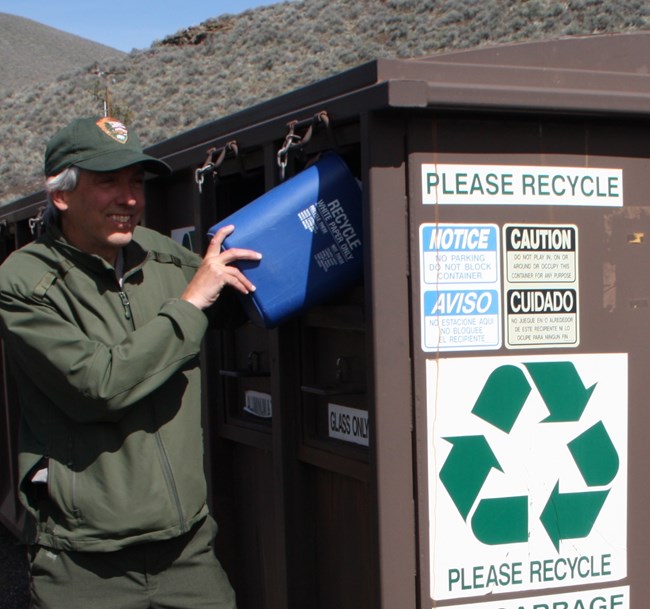|
More than 200,000 people visit Craters of the Moon every year to explore the cool refuge of a lava tube cave or peer deep into a volcanic crater. Nationwide, national park sites host over 285 million visitors per year. The 1916 NPS Organic Act mandates that parks be managed not only for the enjoyment of today's visitors, but "preserved for future generations" as well. To achieve both, parks must be managed in a way that minimizes our collective footprint on the land. In a word, parks must be sustainable.
EnergyThe visitor center was renovated in 2005 and uses considerably less energy now than before, despite nearly doubling in square footage. Better insulation and inexpensive steps such as temporary storm windows in winter help substantially. Ultra-efficient LED bulbs now light park housing units as well. A photovoltaic array installed in 2010 produces enough power to offset roughly 45% of the park's overall energy use, further reducing the park's reliance on fossil fuels. 

WasteEvery year 35 million trees are cut just to supply paper products like hand towels and toilet paper in public buildings across America. To reduce our demand for these resources, the monument's restrooms feature energy-efficient hand dryers instead of paper towels and toilet paper made from 100% recycled sources. Facilities are cleaned with phosphate-free, biodegradable products. Additionally, the monument's recycling program diverts a substantial amount of glass, plastic bottles, aluminum, cardboard, and paper from the landfill. Visitors that take the time to sort and recycle their trash make this program a success - thank you! WaterUntil recently lawns gulped up more than two-thirds of all water used in the park. Combined with aging water lines that leaked continually, the monument's limited water supply simply could not keep up with demand - frequently reduced to a trickle during dry times. Today the high desert is slowly reclaiming ground near the visitor center and residences that once harbored lawns. Replacement of failing water infrastructure reduced the amount of water lost to leaks almost entirely. In this instance, being sustainable had little to do with choice and everything to do with survival. Stepping LightlyBelow are five sustainable steps you can take to lighten your carbon footprint while visiting Craters of the Moon. You will likely see similarities to actions you have made - or can make - at home:
To learn about other actions you can take to make your home, office, or school sustainable, visit the Do your Part! webpage. 
NPS Photo Greening the MoonLearn more about sustainability efforts at Craters of the Moon |
Last updated: November 3, 2023
